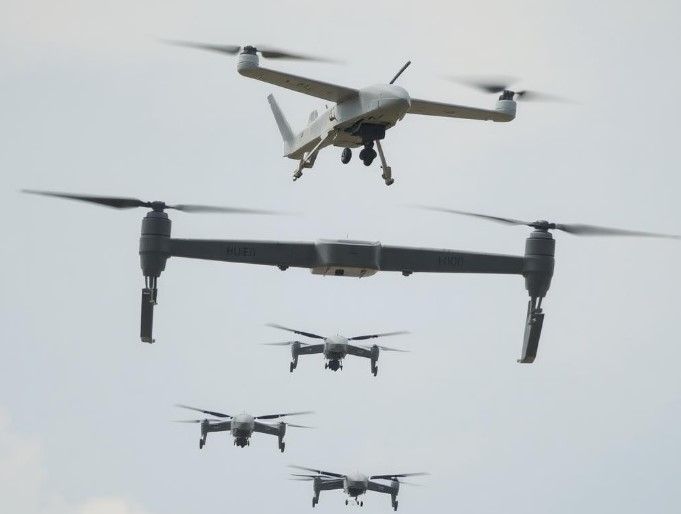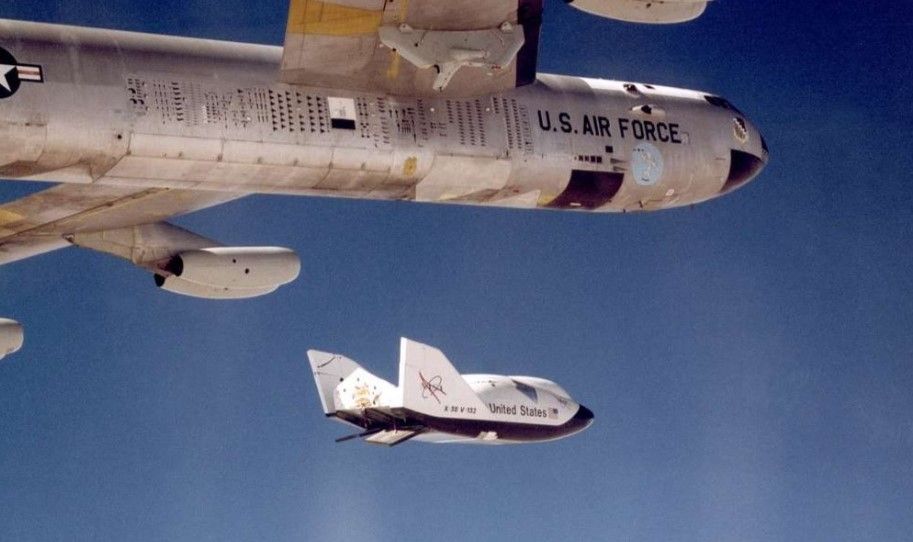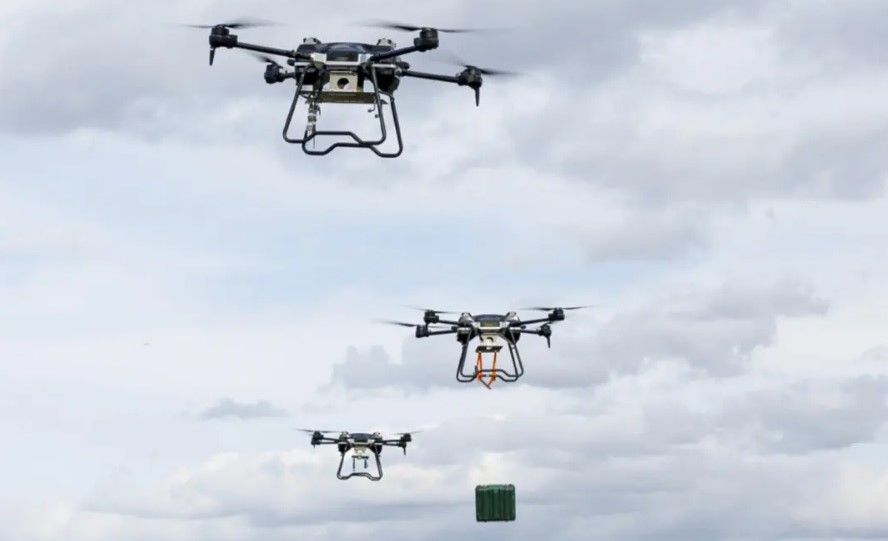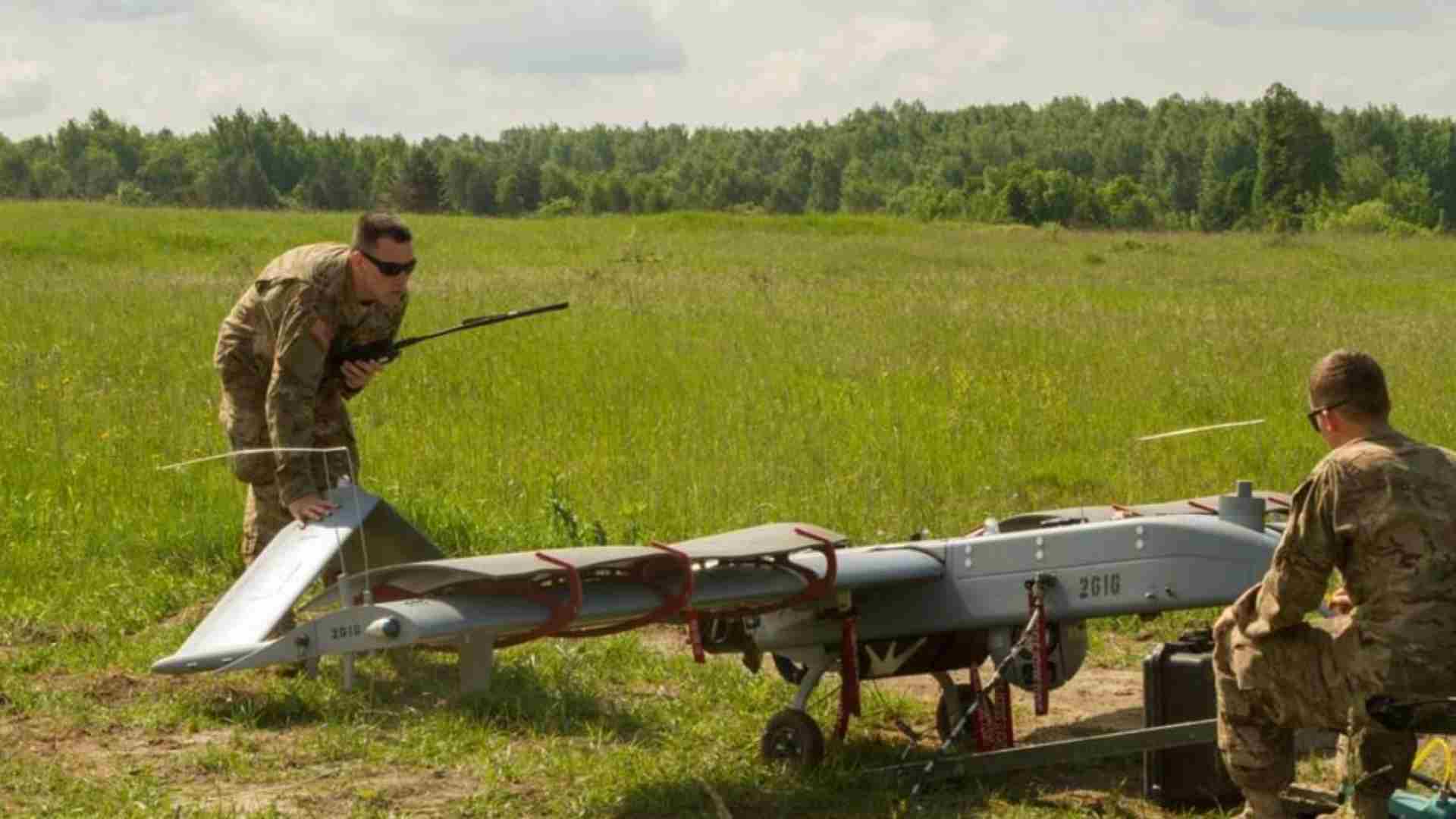Surveillance Drone Motherships
Are Spy Drone Motherships the Future of Surveillance and Border Security?

As drone technology continues to advance, armed forces around the globe are exploring innovative ways to enhance their surveillance capabilities. One cutting-edge idea gaining traction is the use of motherships for spy drones.
The concept is to fly airborne, crewless, command centres which could revolutionize reconnaissance missions by deploying fleets of drones from a single platform. With ongoing investment in research and development, military strategists envision that these motherships will play a crucial role in modern warfare. A future where a constant eye-in-the-sky to warn would boost border security and warn of terrorist attacks in times of peace, while providing expanded operational range and improved data collection of enemy troop movements in times of war.

Evidence of this progress in drone technology can be seen in the funding being provided by the US Army as it hopes to create a surveillance drone mothership.
As a recent report by the arms industry journal Defense News explains, the US Army’s Fixed-Wing aircraft Project Office is looking at ways to “demonstrate the operational capability” of a spy drone ‘Launched Effects’ systems (LE). The plan is the create a platform which “would be integrated onto ‘the hardpoints’ of an executive jet category aircraft, such as a Bombardier G6500, which would operate above 41,000 feet mean sea level and would reach true airspeed of above 400 knots for more than seven hours.”
Related articles: New Defence for Anti-Personnel Drones or US Military Puts Faith in Solar-Powered Surveillance Drones
Specifics for the Launched Effects have yet to be determined, but it is envisaged that it would be an uncrewed system, “capable of delivering a wide range of capabilities such as targeting, reconnaissance, surveillance, network extension or kinetic strike.”
It is though that the LE would be launched from the back of a military vehicle or from the wing pylons of an aircraft.
The US Army program had already chosen ten businesses in 2020 to supply advanced, mid-range launching effects technology. Then in early 2024, this was reduced to five selected companies who would collaborate on the development of a prototype, with each contributing a unique component to the system.

As Defense News reports, “Anduril Industries is providing the air vehicle. Anduril purchased Area-I, the original developer of the vehicle — the Altius 700 — in 2021. The Altius 700 has been in use by the Army to evaluate launched effects for over five years.”
Other companies involved in the project include Raytheon Technologies (the mission system provider) and Aurora Flight Sciences (the system integrator), while Technology Service Corp. and Northrop Grumman Information Systems are working on modular payloads.
However, like much of the future of drone technology, the effectiveness of a surveillance mothership for drones remains unknown.
The Advantages of Motherships for Spy Drones
Motherships for spy drones offer numerous advantages that enhance modern surveillance capabilities as larger platforms could carry multiple drones, allowing for coordinated missions across larger areas through extended flight times. Moreover, developments in solar power or even hybrid energy systems could extend operational ranges drastically, allowing missions deep into hostile territories without return trips for fuel.
With a mothership in the air, drone deployments become more efficient and strategic, providing a central command hub that enables real-time data analysis and communication among drone units. Motherships equipped with AI could even autonomously deploy multiple drones, optimizing surveillance missions based on real-time data analysis. This would significantly increase the efficiency of reconnaissance operations.
Additionally, these platforms can be equipped with advanced sensors and payload systems, amplifying the intelligence-gathering potential of each deployed drone. This synergy between motherships and spy drones creates a powerful tool for military operations while minimizing risks to personnel on the ground.
The Challenge of Making Spy Drone Motherships a Reality
While motherships for spy drones present innovative advantages, they also face significant challenges, such as the need to create a crewless aircraft with sensors that could survive in air temperatures of less than 50 degrees Celsius for lengthy periods.

Operational costs are another hurdle. Developing, maintaining, and deploying these sophisticated systems would require substantial financial resources that some argue could be better spent elsewhere in defence budgets.
Additionally, there is the risk of detection. Motherships can become prime targets themselves, compromising their mission if identified by hostile forces or terrorists. Similarly, cyberattacks on communication links between motherships and drones could lead to disastrous consequences or data breaches during critical operations.
Inter-service coordination also presents its own difficulties as military branches often have different priorities and operational protocols when implementing such advanced technology into existing frameworks.

The integration of motherships for spy drones is poised to redefine modern warfare. By enhancing operational capabilities, these platforms would allow military forces to extend their reach and improve surveillance efficiency. The ability to launch multiple drones from a single, mobile base could significantly change the dynamics of reconnaissance missions, enhance situational awareness, and improve response times.
The future landscape of warfare and geopolitics may well be based by how effectively these motherships could be designed and deployed alongside evolving technologies for smaller drones. A situation which is sure to impact global security dynamics and undoubtedly warrants closer attention as drone design and technology continues to unfold.
Photo credit: Nara, FreeMalaysiaToday, Nara, FreeMalaysiaToday, & Gencraft

